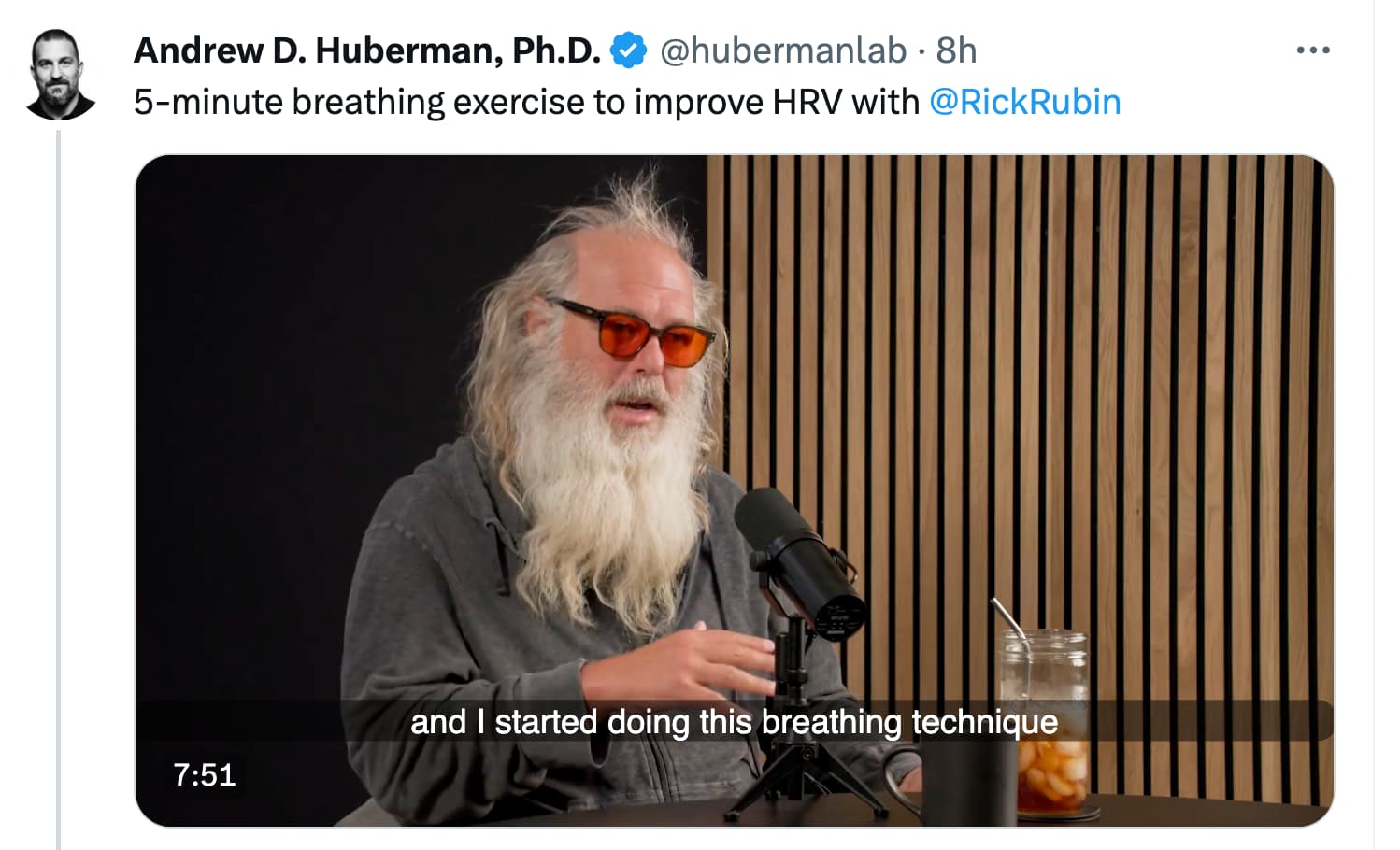Peter Attia is a fanatic about VO2 Max. I am not an extreme exerciser so I am looking into ways to improve it via breathing exercises. Does anyone have a hack for it? Here are a few recommended routines:
Using higher dose l-citrulline, eating more nitrate-rich food and supplementing with PQQ seems to have a profound effect on my cardio performance.
What is a high dose? Do you have a brand that you trust for l-citrulline?
5g every morning as part of my shake of no particular brand.
I’m not convinced you can hack vo2max. But if I was determined to try, I would focus on wim hof and other hyperventilation and hypoxia work.
Try this: take 3 normal breaths. fully exhale and hold it. use a watch to measure the time until you feel a desire to breath in. If it’s under 45 seconds, you can improve it by doing breath hold work. Most people are around 20-25 seconds.
Does that improve vo2max? I don’t know. But it will make exercise easier or harder exercise no harder to do (Greg LeMond said, “it never gets easier; you just go faster”.)
@Jonas Sorry but none of these methods are going to increase your VO2max.
The VO2max is a function of your cardiac output, your total hemoglobin, the blood vessels and capillaries to bring that oxygen to the mitochondria (number and fitness).
Note that some of these like the hemoglobin can be chemically improved but the rest need people to exercise. Does not need to be super hard to start and just walking can bring you to some normal VO2max. To have a good VO2 max then harder/longer exercising is required.
l-citrulline and/or arginine will increase your Nitric Oxide production (Mostly if your are young that is) which will dilate your blood vessels. That might increase your VO2max only if those vessels are the limiting factor.
@Joseph_Lavelle Hypoxia for a few seconds will not work because the duration is too small to induce any meaningful change. Longer duration hypoxia like living in high altitude (or using an hypoxia tents like these for sleeping) will though.
Thanks for the superbly informative answer. I guess I will just have to soldier on and do the hard work. Would regular swimming help? I also bike outdoors often but do not aim for speed, rather just some fresh air. I guess the key is hypoxia?
On a different note, Andrew Huberman recommended taking arginine for sleep. What is the mechanism that both helps sleep and increases NO?
@cl-user I can’t argue with you but have you tried it?
I’ve done co2 tolerance training before…it’s hard work. I only lift weights for 3 hours per week (far less per body part) and still get long lasting benefit. I am not willing to dismiss the possibility that a small amount of hypoxia and co2 tolerance training could help in some way, even if only a psychological benefit. Air hunger is very limiting and is very modifiable in my own experience.
It’s not a replacement for exercise but I believe it’s more than a marginal gain.
Right now I’m focus on shifting to a 100% nasal breathing (I’m probably at 90% now). Sleep is easy with mouth tape. Exercise is harder but is largely just an attention thing except at higher intensities. But I’ll keep after it. Soon I will add back my co2 tolerance work to my morning routine (but not nighttime as it is too stressful).
Would a sauna be of any help?
@Joseph_Lavelle CO2 tolerance training can help indirectly with VO2max by allowing you to train longer and/or harder but will not help by itself.
For helping with nasal breathing even at high output I have been using Turbine for several years now. That’s amazing and allows me to continue nasal breathing even at 10k pace. They say you should change them every week but I use them for months.
I can’t even imaging doing any endurance exercise without them and I always have spares in my running vest just in case I forget them.
@Jonas Anything that increases your heart rate (and your breathing rate) will work. It’s not hypoxia, it’s burning oxygen that triggers the adaptation.
The optimal protocol is to do so called Zone 2 (aerobic before the first ventilatory threshold, basically you can still speak, approximatively below 68% of your max heart rate) training everyday for as long as possible. Then add some high intensity to pump your heat rate at the maximum you can reach twice per week.
That protocol will increase your VO2 max with visible results in 6 to 8 weeks and continue to increase after. You will just notice that you will do your low intensity at a faster and faster pace.
Use one of these
https://www.amazon.co.uk/Powerbreathe-LSI-Plus2-Power-Breathe-Fitness/dp/B000NJMLPA/
And see my comment in this thread
On a related note, Here is a clip of a breathing exercise, supposedly improving HRV.
https://x.com/hubermanlab/status/1740793436922618049?s=20

